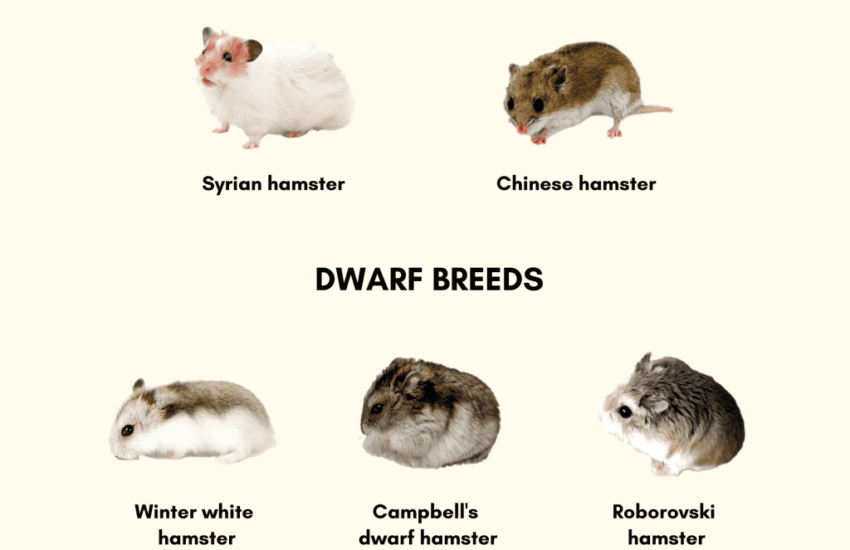Best Hamster Species for Beginners
Hamsters are adorable, small pets that have captured the hearts of many animal lovers around the world. They are often seen as the perfect starter pets for families and individuals alike. According to a recent survey, around 30% of first-time pet owners choose hamsters as their first companions. But with several breeds available, how do you decide which hamster species is best suited for beginners? In this article, we will explore various hamster species, their characteristics, and why they might be the perfect choice for you. You’ll also learn about the care requirements, temperaments, and what to expect when welcoming a hamster into your home.
In the following sections, we’ll delve deeper into some of the most popular hamster species that are ideal for novice pet owners. We will discuss their unique traits and any specific needs they may have. Furthermore, this comprehensive guide aims to equip you with all the needed information to ensure a happy and healthy environment for your new furry friend.
Understanding Hamster Breeds
When it comes to choosing the right hamster species, it is essential to understand the differences between them. Hamsters vary in size, temperament, and care requirements. For beginners, some hamster breeds are more suitable than others due to their gentle nature and ease of care.
Top Hamster Species for Beginners
Syrian Hamster
The Syrian hamster, also known as the golden hamster, is perhaps the most popular choice for novice pet owners. They require minimal care and are known for their friendly disposition. Syrian hamsters can grow up to 6 inches long and come in various colors and patterns.
- Temperament: Generally gentle and easy to handle.
- Housing: Require a single enclosure; they are solitary animals.
- Activity: Most active at night, so they are perfect for evening interactions.
Dwarf Hamster
Dwarf hamsters, including the Roborovski and Campbell’s dwarf hamsters, are smaller in size compared to Syrian hamsters. They are social creatures, making them an excellent choice for families with children.
- Size: Typically 2-4 inches long.
- Temperament: Friendly but may take longer to get used to handling.
- Housing: Can be housed in pairs or small groups.
Chinese Hamster
The Chinese hamster is another lesser-known breed that makes a great pet for beginners. They are slightly larger than dwarf hamsters but smaller than Syrian hamsters.
- Temperament: Slightly skittish, may require patience when being handled.
- Housing: Prefer horizontal space for running and exploring.
- Activity: Tend to be nocturnal but also enjoy daytime playtime.
Choosing the Right Habitat
The habitat you provide for your hamster is crucial to their well-being. Each species has its preferences regarding space and environment. It’s essential to consider their natural behaviors when setting up a home for your pet.
Housing Requirements
Habitat Size
Regardless of the hamster species, a spacious cage is essential. It should be well-ventilated, easy to clean, and large enough to allow for adequate movement.
Bedding Choices
Choosing the right bedding material is essential for comfort and hygiene. Safe options include aspen shavings, paper-based bedding, or fleece liners.
Toys and Accessories
Hamsters need stimulation to stay mentally healthy. Providing chew toys, tunnels, and exercise wheels will keep them entertained.
Feeding Your Hamster
A balanced diet is essential for the health of your hamster. Different species may have slightly different dietary needs, so it’s crucial to provide them with the appropriate food.
Commercial Hamster Food
Most commercial hamster food is specially formulated to meet the nutritional needs of hamsters, such as pellets, seeds, and grains.
Fresh Foods and Treats
In addition to their regular diet, fresh vegetables should be offered in moderation. Some safe options include:
- Carrots
- Cucumbers
- Broccoli
Water Supply
Ensure your hamster has access to clean, fresh water at all times. A water bottle with a sipper tube is usually the best option to avoid spills.
Handling and Socializing with Your Hamster
Proper handling is crucial to building trust with your new pet. Understanding the temperament of your chosen hamster species will help ease the process.
Getting to Know Your Hamster
Initial Introduction
Give your hamster time to adjust to their new environment before handling them. Allow them to familiarize themselves with their cage and surroundings.
How to Handle Your Hamster
When you’re ready to pick up your hamster, do so gently and scoop them up in your hands. Avoid startling them, as this can lead to biting.
Building Trust
Spend time near their cage, talking softly to help them get used to your presence. Treats can also be used to create positive associations.
Common Health Issues in Hamsters
Like all pets, hamsters can experience health issues. Understanding common ailments can help you identify problems early.
Signs of Illness
Be observant! If your hamster shows any unusual behavior, such as lethargy, lack of appetite, or changes in drinking habits, it may be time to consult a veterinarian.
Preventative Care
Maintaining a clean cage environment, providing a balanced diet, and ensuring regular exercise will support your hamster’s overall health.
Final Thoughts on Choosing a Hamster
Choosing the right hamster species as your first pet can be an exciting adventure. By understanding their unique needs and characteristics, you can cultivate a rewarding relationship with your new furry friend. Remember that your commitment to provide care, love, and attention will lead to a healthy and happy hamster. If you are looking to read further or explore additional resources, check out this guide on hamster care and this helpful article on creating the perfect habitat.

In summary, whether you choose a Syrian hamster, a dwarf variety, or a Chinese hamster, your new pet will bring joy and companionship to your life. Take the time to learn about their specific needs and characteristics, and enjoy the wonderful journey of hamster ownership!
